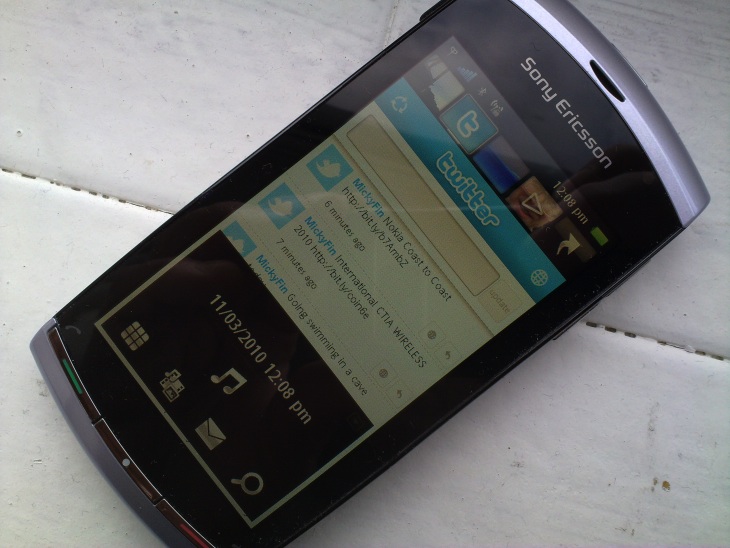First and foremost, I don't buy the vast majority of smartphones that I review. I borrow them from the appropriate PR company, for as short a time as a week or as long as many months. But I rarely own them outright, and this is a vital point to emphasise in defense of accusations of bias:
Because I have no financial investment in what I'm reviewing, I can be 100% objective: there's no downside in saying if something stinks. On the other hand, the very people accusing me often have a smartphone that they themselves are championing - usually because they have bought it and are (understandably) trying to justify their own choice and purchase to themselves.

The Vivaz - a good example of a device where I've been critical but where owners have defended it vigorously
Note that I'm not claiming that All About Symbian's review team necessarily gets all reviews perfectly pitched right away - we're only human. And in some cases a device has taken time to 'grow' on us - the Nokia E75 being a good example. But we're absolutely not prejudiced by financial factors - there's no reason to justify something that we've bought and are secretly regretting.
Anticipating a rush of comments, I should perhaps point out that that the "100% objective" stance is within the context of this site being called "All About Symbian". And it's why I sometimes have a slightly different take on devices when viewed from an industry-wide standpoint in The Phones Show.
So, given that this site is only concerned with things from the Symbian world, you can rightly interpolate that we wish the Symbian ecosystem well for the future. Which is why we always give manufacturers and developers the benefit of the doubt if there's a problem and if the party concerned looks like they're on the case and about to fix things.
For example, in the case of the Nokia N97 (and Sony Ericsson Satio, to some degree), I delayed my main review until I was sure that the first round of major firmware updates had been completed and that the software was mainly 'all there' - it would have served nobody if I'd jumped down hard on either device on day one and proclaimed that each flagship was a complete and utter crock, when it was clear that Sony Ericsson and Nokia (respectively) were hard at work on addressing the problems.
Another example: we evaluate about twice as many applications/games for review on AAS as actually appear in written form. At least half the items we look at are clearly not ready for the prime time. Again, it's far better for the common good to hang back, let the developer know the issues and wait for them to be fixed, before ramping up for a full review that can criticise design flaws and problems but which doesn't have to waste paragraph after paragraph talking about trivial bugs that are going to be fixed in short order.
Where it's clear that a device or application is essentially 'done', I'm less reticent about jumping in with opinions.
It's also well worth mentioning that the hardware I see at All About Symbian is 100% SIM-free, i.e. unlocked devices with network branding. This is good for me because I can bung any SIM card in and good in that firmware updates (usually) come out for me first. But it can lead to a discrepancy in what what I talk about (and profer opinions on) and what others in the wider world are seeing in terms of problems - quite often these users are on older firmwares because they've bought 'on contract' and their networks haven't yet approved the relevant firmware updates. In some cases, this can leave users two or three updates behind the latest SIM-free version, a year or more behind, staggeringly.
The accusation that we talk about Nokia far more than any other Symbian partner or licensee is fair - but then Nokia produce far more smartphone models and supply them with far more updates than any other manufacturer. We can only cover what's new, what's interesting and what's actually released, again all within a Symbian context, and try to reflect the relevant device numbers and world market share.
In short, I'll confess to a slight rose-tinted Symbian filter when reviewing for AAS - I genuinely wish all manufacturers and developers well and I'd love to see Symbian stay top of the smartphone heap for years to come. But I'm not blind to faults - others have commented on many of my articles that I've been "very fair".
In summary, if you've bought device X and are feeling protective of its attributes then I fully understand your feelings. But bear in mind that it's the sheer lack of financial attachment which enables me to be somewhat more balanced about praising the good and shaming the bad.
Steve Litchfield, All About Symbian, 11/5/2010

